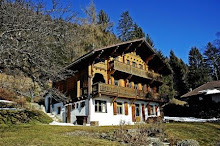In the epic poem, Odysseus’s wife and son have been waiting for Odysseus’s return. In the meantime, a bunch of free-loading suitors are loafing around Odysseus’s home, trying to woo the lonely wife and murder the inexperienced son. The home is in chaos and disarray. The suitors are pigging out on Odysseus’s food and wine and treating Odysseus’s servants badly. They are also incessantly flirting with Odysseus’s wife.
When Odysseus returns home, he comes in disguise as a beggar. He is treated badly by the rude suitors who occupy his home, violating Zeus’s doctrine of hospitality. When Odysseus reveals himself as the returned husband, he slaughters everyone in a gloriously vindicating bloodbath. While the hall dripped with blood and bodies were stacked outside the palace, Odysseus makes his way to bed with his wife Penelope.
His marriage bed, which Penelope has kept undefiled, was built by Odysseus before he left on his voyage to Trojan War (cf. The Illiad---by the way, Odysseus is the guy who cooked up the Trojan Horse scheme).
 Using a rooted olive tree as the “cornerstone” bed post, he built his bed around the tree. The significance of a “rooted” marriage bed cannot be ignored. Like marriage itself, the bed is permanent and unshakeable. Then he built his bridal chamber around his bed; then he built his palace and city around that. At the centre of the city, literally and symbolically, is the marriage bed. As racy as that sounds, it is the undefiled marriage bed that is the centre of the civilized world in Homer’s mythological masterpiece.
Using a rooted olive tree as the “cornerstone” bed post, he built his bed around the tree. The significance of a “rooted” marriage bed cannot be ignored. Like marriage itself, the bed is permanent and unshakeable. Then he built his bridal chamber around his bed; then he built his palace and city around that. At the centre of the city, literally and symbolically, is the marriage bed. As racy as that sounds, it is the undefiled marriage bed that is the centre of the civilized world in Homer’s mythological masterpiece.Marriage was Ancient Greece’s way of countering the Fall, returning to Eden.
On a side note, I personally think it would be great to have an olive tree as a bed post.






